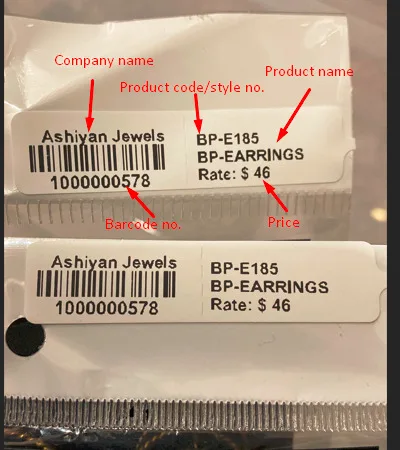Any intelligent fool can make things bigger and complex… It takes a touch of genius and a lot of courage to move in the opposite direction.
Inventory basics
At Any moment of time, every company holds some stock of various items. These items collectively make up the inventory of the company. Inventory is a very important asset in any company except the service organization. Proper management of inventory is needed in every company. Here are some of the reasons for the same:
Proper inventory level ensures timely fulfillment customer requirements.
It ensures continuity against uncertainties of suppliers.
In manufacturing, it also exists normally to streamline the flow of goods through all the steps in the production process, without any interruption.
The right level of inventory facilitates optimum utilization of resources like machines, manpower and material.
Inventory has impact on costs.
- These are two type of costs:
- Cost of carrying inventory [Material cost, ordering cost, holding costs (Storage, Insurance, Loss, Damage, Wastage etc.)]
- Cost of not carrying inventory (Lost sale due to stock out, Loss of customer trust)
Types of inventory to be managed are:
- Raw material
- Work in progress
- Finished goods
- Consumables, supplies
- Packing material, components etc.
Inventory control methods
- The methods used to control inventory focus on
Classification of inventory
Setting up minimum stock levels and ordering according to that
Using different ordering methods
ABC Analysis
In this method, all the inventories of the company are classified into three classifications, based on the annual amount involved in maintaining the item’s inventory. This amount is calculated by multiplying number of units consumed in a year with the price of a unit of the item.
The items are classified in three classes: A, B and C.
Class A items are those which account for approximately 50-70% of the total inventory cost.
Class B items are those which account for approximately 20-30% of the total inventory cost.
Class C items are those which account for approximately 5-10% of the total inventory cost.
This means that we should have a greater degree of control to preserve Class A items. They need more accurate record keeping and forecasting.
A reasonable degree of care may be taken in order control the items of Class B.
A routine type of care may be taken in the case of the third category, Class C.
ABC Analysis method is also known as “stock control according to value method”, “selective approach “ and “proportional parts value approach”. If this method is applied with care, it ensures considerable reduction in the storage expenses and it is also greatly helpful in preserving costlier items.
Setting up Various Stock Levels
Reorder Level
To maintain a satisfactory level of inventory for every material, a specific quantity is fixed as the reorder level. Once the current stock drops to this level or goes below, that item has to be ordered to the vendor. It is that level when the inventory is sufficient to meet the demands of production till such a time as the materials are replenished. Reorder level depends mainly on the maximum rate of consumption and order lead time.
Maximum Stock Level
Maximum level is the inventory quantity above which stock should never reach. The function of maximum level is essential to avoid unnecessary blocking up of capital and storage space in inventories, losses on account of deterioration and obsolescence of materials, extra overheads and temptation of thefts etc.
Minimum Stock Level
It represents the lowest quantity of a particular material below which stock should not be allowed to fall. This level must be maintained at every time so that production is not held up due to shortage of any material. This level is below the reorder level. It is that level of inventories at which a fresh order must be placed to replenish the stock, if not already done.
Buffer Stock
A quantity of a critical item in our material list which is maintained as a backup stock is called buffer stock or safety stock. Generally, this stock is not used unless there is a delay in procurement and we have to use it.
If buffer stock is used, it must be replenished as soon as regular stock arrives. We must refresh the goods in the buffer stock with fresh ones periodically, while keeping the stock level untouched.
Optimum Ordering Quantity (Economic Order Quantity)
One of the most common problems faced by the purchase department is decision regarding how much to order at a time. Purchasing in bulk quantity involves lesser purchasing cost. But cost of carrying them tends to be higher. Likewise, if purchase is made in smaller quantities, the holding cost is low, but purchasing cost tends to be higher. Hence, the most economic buying quantity or the optimum order quantity should be determined by considering the factors such as the cost of ordering, holding or carrying cost. This quantity can also be determined on the basis of the standard lot or packing size, our daily consumption, optimum size or weight as per logistic considerations.
Every time when a material is to be ordered, it should be ordered as per this Optimum Ordering Quantity, in the multiples of that number.
Ordering Methods
Different companies have different ordering methods, depending upon their product mix, warehouse and store locations, production or sales cycles, supplier terms, volumes and value of inventory items. There are four possible ordering approaches.
Just-In-Time
This is one of the most popular methods of controlling inventory in the manufacturing environment.
Just in Time (JIT) aims to reduce costs by cutting stock to a minimum.
It seeks to delivery inventory to the production floor just in time for use. Items are delivered when they are needed and used immediately, not very soon, not late.
JIT method delivers only the exact quantities required to complete the current production, no more, no less.
There is a risk of running out of stock, so we need to be confident that our suppliers can deliver on demand.
Generally, in most manufacturing environments utilizing JIT delivery, the supplier has a warehouse very close the manufacturing facility.
Material Requirement Plan
Material requirement planning (MRP) is an inventory management system designed to assist production managers in scheduling and placing orders for items. Generally, they are software-based solutions as a part of system that helps in production planning, scheduling, inventory control and manufacturing.
MRP calculates the inventory requirement based on the current inventory levels, production plan, open orders etc. and prepares a list of items needed.
It ensures that the materials are available for production when they are needed.
It helps in maintaining the lowest possible inventory levels in the store.
If properly implemented, it can reduce cash flow and increase profitability.
MRP can help you to be pro-active rather than re-active in the management of your inventory levels and the material flow.
Ordering Fixed Quantity
A standard quantity is ordered when the recorder level has been reached regardless of when this occurs.
This depends on the consumption of and the demand for the items.
This approach is useful for expensive items and critical items.
Ordering at Fixed Times
In some cases, a purchase order is issued at fixed intervals, even if the reorder level is not reached. This is a done for items which are not very critical and not every expensive also, so little extra inventory may not cause much problems. The buyer and the vendor establish a routine of such regular ordering. Also, sometimes orders are combined to reduce the transportation expenses.
Guidelines for inventory control
- Inventory can hold a lot of money in investment for any manufacturing or trading company. It is an important asset. So, it must be handled with a lot of care.
- Inventory levels and total investment in inventory must be regularly watched by the business leaders.
- Inventory of non-moving items must be taken care of as per the most appropriate action.
- We must make a complete list of various items, of which we wish to manage the inventory.
- All the issue, receipt transactions of every item must be recorded properly.
- We must follow a practice of physical counting of inventory at regular intervals. The frequency of such counting may be decided differently for different classification of items, depending upon their value, number and criticality in nature.
- The physical stock levels must be reconciled with paper stock level after each physical counting of the inventory.
- We should determine Minimum Stock Level, Maximum Stock Level, Reorder Level, Buffer Stock, Optimum Order Quantity etc. for each important product in our inventory.
- It is advisable to use a software system to track inventory levels.
- The inventory of Finished Goods must be maintained as per sales orders and sales forecast.



